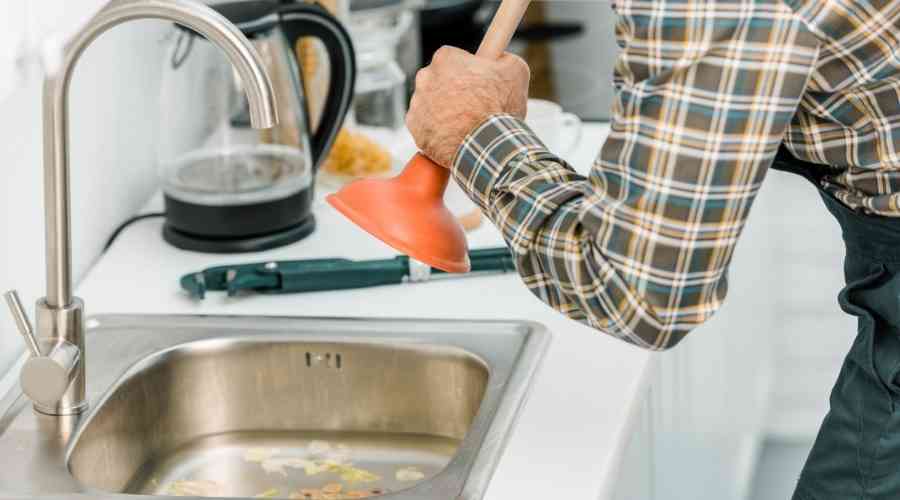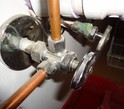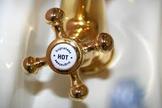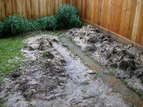|
It's not surprising to most homeowners, that one of the most useful tools in the house is the humble plunger. After all, sinks, shower drains and most importantly toilets frequently become clogged, and if you want to avoid a house call from a plumber for around $100 to as much as $275, buying a set of plungers is really mandatory.
Here are 5 ways to use a plunger to unclog a toilet, sink or shower drain, although the first two are really about avoiding clogs in the first place and having the right equipment. Let's start with having the right equipment. #1. You'll need two types of plungers, not just one. When most think of a plunger they think of an ordinary cup plunger that has a rubber cup at the base and a stick attached to the base. Cup plungers are the cheapest form of a plunger and can be obtained at some dollar-type discount stores for as little as $5. Even at a hardware store, it is unlikely you would pay more than $10 for one. Yes, you will need a cup plunger to help unclog sink or shower drains, but for your toilets, you need what is called a flange plunger. A flange plunger is made typically of 5 or 6 layers of rubber or rubber substitute and has an accordion-like look. The reason you need a flange plumber for your toilets is that they provide significantly more suction, which you need for the more open space of a clogged toilet. #2. Avoid putting things that can cause a clog. For toilets, the number 1 culprit for clogging is kitty litter. And despite what the manufacturer may say, thousands of plumbers will tell you this is a huge clogger of toilets. The second is diapers, baby wipes, and feminine products. All three can attach to the inner pipings of your toilet and cause havoc. For shower drains, the main culprit is hair. Get a household of several women using the same shower and you can guarantee there will be plenty of hair to clock the shower drain. Want to prevent hair from clogging your drains? Then squirt a little dishwashing soap into the drain, then add one cup of baking soda and one cup of vinegar. Wait 5 minutes, and then add a cup or two of boiling water. Follow this up by using a cup plunger to eliminate any hair left over. As far as your kitchen sink, the problem most relates to kitchen sinks, and the main culprits here are kitchen grease and coffee grinds, eggshells, and produce stickers. Pasta and dough can also be a problem. Use common sense, and you will rarely have a problem in the first place. #3. More on unclogging toilets. Toilets are the number one clogged item, and most people keep trying to flush the toilet hoping the problem will just go away, but that just adds more water to the toilet which can lead to a total overflow. Instead, shut the water flow off completely and use your flange plunger. Make sure that when you insert your flange plunger in the toilet, before trying to plunge out the problem, you pump the plunger a couple of times to expel any air in the plunger, otherwise, air will cause a cushion of air that will prevent the plunger from giving a complete suction. Then insert the plunger into the toilet hole, and pump up and down. Usually, after 2 or three tries, the toilet will completely unplug. Never add chemicals, as they can be dangerous to your health. Keep trying and for the rare toilet that does not unplug after several attempts, then you will need to call a plumber in most cases. #4. Use a cup plunger to unclog your shower drain. If you have a shower drain problem, then you will need a cup plunger, because it when depressed, will completely cover your shower drain. Be sure and use a towel or washcloth to cover the overflow drain, and then pump vigorously for around 15 seconds of plunging with the plunger. Repeat several times if necessary. #5. Use a cup plunger to unclog your sink drain. Your sink drain may be more stubborn than your shower drain, but again use a cup plunger, and again cover the sink drain completely. It may take twice as long to unclog a kitchen sink, but keep working at it. However, after trying perhaps 8 or 10 times, some homeowners use commercial products like Drano or attempt to use a commercial snake. Use these products with extreme caution, as chemicals may burn, and using a snake may actually further clog the pipes.
2 Comments
3/12/2022 10:36:35 pm
I genuinely enjoy reading your articles. Can you recommend any other blogs/websites/forums that deal with the same subjects? Thanks.
Reply
Leave a Reply. |
Archives
March 2024
Categories
All
|
- Plumbers / Drain Service
-
Plumbing Services
- Boiler Repair - Replace
- Clogged Drains and Sewer Lines
- Faucet Replacement
- Elizabeth Furnace Installation & Replacement
- Furnace Service & Maintenance
- General Plumbing Repairs
- Heat Pump Service & Maintenance
- Hot Water Heater Repair Replace
- Humidity Control & Dehumidification
- New Supply and Drain Lines
- Toilet and Vanity Replacement
- About Us
- Privacy Policy
- Contact Us
-
Areas We Service
- Plumber Bayonne
- Plumber Belleville
- Plumber Carlstadt
- Plumber Edgewater
- Plumber Hoboken
- Plumber Jersey City
- Plumber Kearny
- Plumber Lodi
- Plumber Lyndhurst
- Plumber Newark
- Plumber North Arlington
- Plumber North Bergen
- Plumber Palisades Park
- Plumber Ridgefield Park
- Plumber Rutherford
- Plumber Secaucus
- Plumber Teaneck
- Plumber Union City
- Plumber West New York
- Plumber Weehawken
- Blog
|
Elizabeth Plumbers and Drain Service

162 Elmora Ave. #323
Elizabeth, NJ 07202 elizabethdrainservice@gmail.com www.elizabethdrainservice.com (908) 988-0365 |
Elizabeth Drain Service is a full service and licensed plumbing contractor that specializes in drain clearing and sewer backups and repairs. Call us today if you have any plumbing needs.
|


 RSS Feed
RSS Feed



